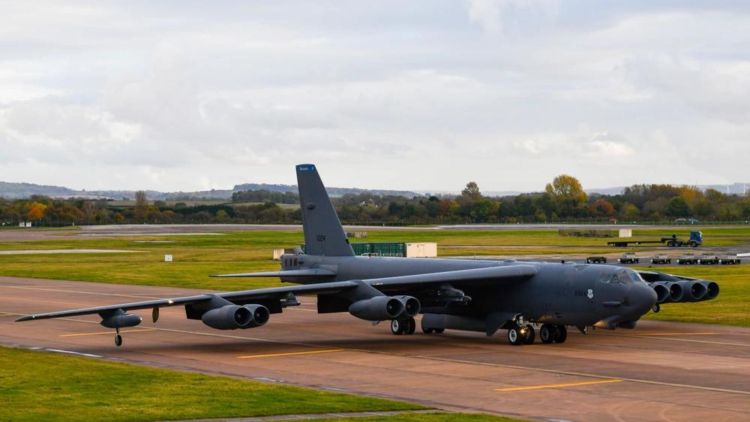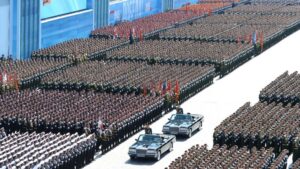On a routine mission, U.S. B-52 bombers flying in international airspace were intercepted by two Russian aircraft over the Barents Sea. This happened around 8 a.m. Central European Time.
Despite the intercept, the B-52s maintained their course and continued their mission as planned. They integrated with NATO fighter aircraft before landing at Mihail Kogalniceanu Air Base in Romania.
First-Time Operations from Romania
This deployment marks the first time U.S. strategic bombers have operated out of Romania. The B-52s will be based at the Romanian Air Base near the Black Sea coast. During their stay, they will work closely with NATO Allies and other international partners. The goal is to synchronize capabilities and reinforce security commitments across the U.S. European Command area of responsibility.
General James Hecker, USAFE-AFAFRICA commander, emphasized the significance of this deployment, saying:
“In today’s global environment, it is vital that we be postured to deliver a range of sustainable capabilities from great distances. This iteration of Bomber Task Force offers an excellent opportunity to refine our agile combat employment tactics, techniques, and procedures.”
Hecker highlighted that through collaboration with the Allies, U.S. forces are better equipped to address current and future threats.
Commitment to NATO Allies
The U.S. regularly demonstrates its commitment to NATO Allies through Bomber Task Force missions. These missions enable dynamic force employment in the European theatre.
A B-52 Stratofortress from Minot Air Force Base, N.D., prepares to touchdown at Andersen Air Force Base. (U.S. Air Force photo by Airman 1st Class Alexa Ann Henderson / DVIDS)
They provide strategic predictability and assurance for Allies while introducing operational unpredictability for potential adversaries. General Hecker noted, “The U.S. is dedicated to working alongside our NATO Allies along the eastern flank to ensure we have the combined skills and coordination capabilities necessary to maintain regional safety, security, and stability.”
Strategic Presence and Deterrence
Regular deployments of U.S. strategic bombers are a testament to the readiness and capability of both the U.S. and NATO forces. These missions are not just routine flights; they are meticulously planned operations that demonstrate the U.S.’s commitment to maintaining a robust defense posture in Europe.
A B-52H Stratofortress bomber, assigned to the 2nd Bomb Wing from Barksdale Air Force Base. (U.S. Navy photo by Mass Communication Specialist 2nd Class Eric Coffer / DVIDS)
By showcasing the ability to mobilize and operate strategic bombers on short notice, the U.S. highlights its readiness to respond to any potential threats.
These deployments also enhance the interoperability of NATO forces, ensuring that Allied air forces can work seamlessly together in joint operations. The strategic presence of these bombers in Europe serves as a powerful deterrent, signaling to adversaries that NATO remains vigilant and capable of defending its members.
The deployment of strategic bombers from Romania, in particular, underscores the strength of the transatlantic link within NATO. It highlights the cohesion and solidarity among Allied air forces, demonstrating that they can integrate and operate as a unified force.
This move sends a clear message to potential adversaries: the U.S. and its NATO Allies are committed to collective defense and are prepared to take decisive action to protect the Alliance.
By operating from Romania, U.S. bombers are strategically positioned to respond rapidly to threats in the region, reinforcing NATO’s deterrence posture. These missions reaffirm the transatlantic bond and the shared commitment to ensuring the security and stability of the Alliance.
Conclusion
This historic deployment of U.S. B-52 bombers to Romania represents a significant step in enhancing NATO’s collective defense posture.
By operating from Romania, the U.S. demonstrates its unwavering commitment to its Allies and its readiness to address any emerging threats in the region. Collaboration and integration with NATO partners ensure that the Alliance remains robust and capable of maintaining regional security and stability.
__
Disclaimer: SOFREP utilizes AI for image generation and article research. Occasionally, it’s like handing a chimpanzee the keys to your liquor cabinet. It’s not always perfect and if a mistake is made, we own up to it full stop. In a world where information comes at us in tidal waves, it is an important tool that helps us sift through the brass for live rounds.



